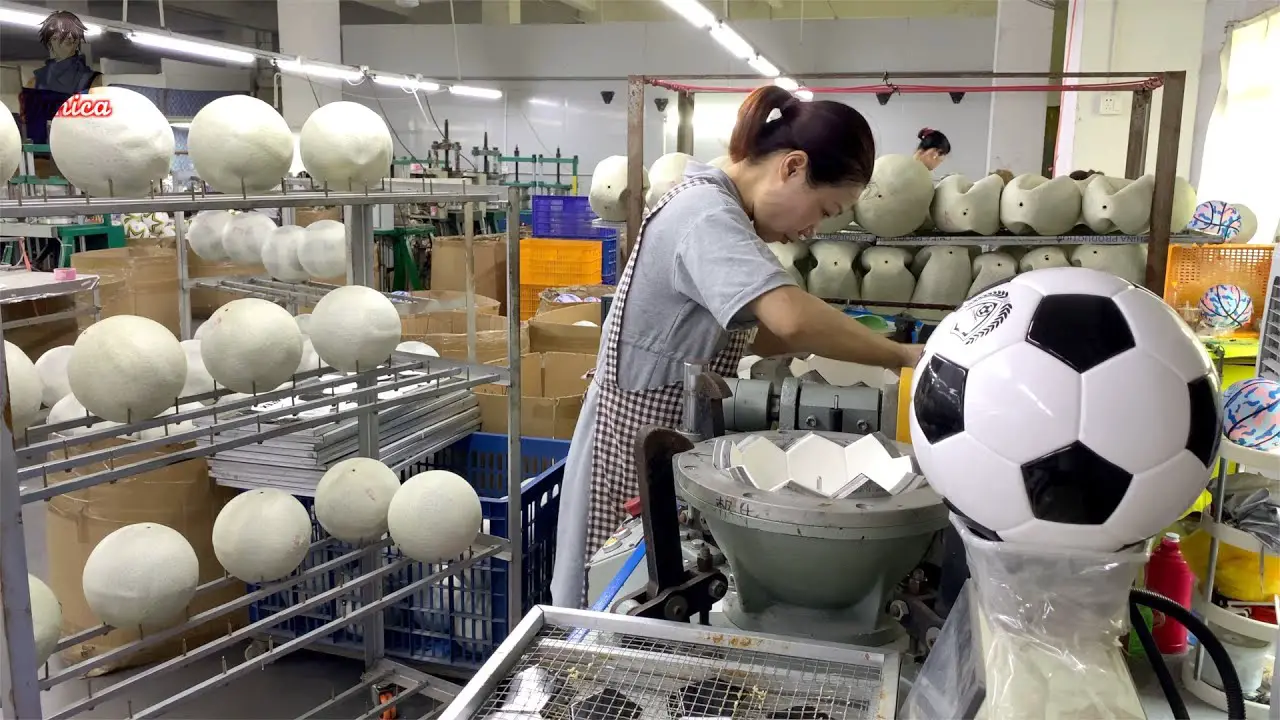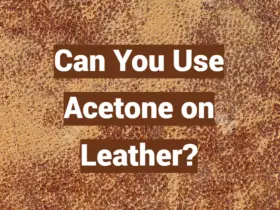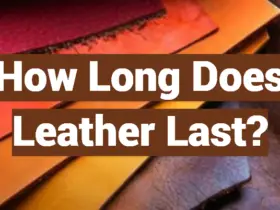Are you thinking of purchasing a soccer ball but don’t know the specifics? Trying to learn the basics of the sport and want to dive in deeper? Or maybe you’re just curious how many leather panels are on a soccer ball?
Whatever your reason is, if you stick with us until the end of this post, we’ll help answer all your questions!
We’ll take you through all the details regarding one of football’s most essential items – right down to counting those pesky little leather panels. So grab your pen and paper because it’s time to learn about what makes up a classic soccer ball design!
The Number of Leather Panels on a Soccer Ball
The answer to this question is simple – a soccer ball is typically made up of anywhere between 16 and 20 panels.

Most commonly, a soccer ball will have either 18 or 32 panels, depending on the size and type of ball. However, some balls may also come with 24 or fewer panels.
Leather balls are usually made up of 18 or 32 pieces, and each piece is sewn together to make it strong. Smaller balls like those used in mini-soccer or futsal have 16 pieces.
Official Ball Specifications
A regulation soccer ball must have 18 parts. Each part must be between 0.6 and 1 inch in size. The leather should be 4-5 mm thick. Inside the ball, there should be 2 mm of air cushioning and 6 mm padding outside the ball.
For increased durability, most soccer balls come with 32 panels. The stitching is more durable and the shape of the ball stays rounder for longer. [1]
Ancient Era
Soccer balls have been around for a long time. The first ones were made with only 2 pieces of leather because it was very expensive.
As technology got better, the cost of leather went down, so soccer balls had more pieces of leather – now they usually have 18-32 pieces.
How is a Soccer Ball Produced?

Making a soccer ball is complicated. The leather is cut and sewn together with special thread.
Inside the ball, a latex bladder is put in place. Finally, it is filled with air and checked to make sure it’s perfect before shipping.
Leather
The type of leather used on a soccer ball varies. Most balls are made with cowhide leather, but synthetics like polyurethane can be used as well.
The most important element to look for is that the leather is strong and durable enough to withstand kicks without breaking or tearing.
Panel
The panels on a soccer ball are not just for decoration. They affect how the ball moves when you kick or head it. The panels’ thickness and shape change how much air resistance there is. This changes the speed and accuracy of the ball.
To make sure your soccer ball has the best performance possible, look for balls with rounder shapes and thicker panels. The more rounded the panel, the less air resistance there is, which makes it easier to control and pass the ball accurately.
Stitched
A soccer ball is usually stitched with double stitching to make sure the panels are secure. The threads should be strong and tight to prevent fraying or tearing.
Sticking
Now that you know how many leather panels are on a soccer ball and what makes up a high-quality one, you can go out and find the perfect ball for your game.
Don’t forget to practise with it too! With the right skills, a well-made soccer ball can last you years. [2]
Liner
The liner on a soccer ball does more than just protect the bladder. It also helps keep the shape of the ball round and prevents it from getting warped from kicks or uneven surfaces.
Bladder
The bladder inside a soccer ball is usually made from latex or rubber. It’s important to make sure the bladder is strong and won’t rupture easily, as this could cause your ball to lose air quickly. A good quality bladder will also be able to withstand kicks without deflating.
How Many Leather Panels Are on a Soccer Ball?
Most soccer balls have 18 or 32 pieces of leather. Smaller balls may have 16 pieces. Quality balls will also be strong and not pop easily. With good care, a quality soccer ball can last a long time.

FAQ
How many panels are in a soccer ball?
Most soccer balls have either 18 or 32 panels of leather. Smaller balls may have 16 panels. Quality soccer balls will also have a strong bladder and be stitched with double stitching for extra strength.
What is the best type of material for a soccer ball?
The best type of material for a soccer ball is cowhide leather. It is strong and durable, and can withstand kicks without breaking or tearing. Synthetic materials like polyurethane can also be used to make soccer balls.
What makes a good quality soccer ball?
A good quality soccer ball should have thick panels for reduced air resistance, double stitching for extra strength, a strong bladder to withstand kicks, and a rounder shape to make it easier to control and pass the ball accurately. It should also be made of strong material like leather or synthetic material.
How do I care for my soccer ball?
To properly care for your soccer ball, you should store it in a cool and dry place away from direct sunlight.
Clean it regularly with a mild soap and soft cloth. Check for holes or tears in the leather panels that may need to be repaired.
Finally, make sure to check the air pressure on your soccer ball every few weeks to ensure it is properly inflated.
How many layers of leather are there in a professional soccer ball?
Professional soccer balls usually have four layers of leather. The outermost layer is made of thick, durable cowhide leather to protect the ball from wear and tear.
The inner layers are then built up with multiple thinner panels of leather to reduce air resistance and improve accuracy when controlling and passing the ball.
How many tiles are on a soccer ball?
The number of tiles on a soccer ball depends on the type and size. Most full-size soccer balls have either 18 or 32 pieces of leather, while smaller balls may have 16 pieces.
How many black patches does a soccer ball have?
Most soccer balls will have 8 black patches, which form a design on the ball. The number of patches can vary depending on the type and size of the ball.
Generally, the more panels a soccer ball has, the more patches it will have. Quality balls also usually have stitching to make sure the panes are secure.
Why do soccer balls have 32 panels?
The number of panels on a soccer ball is related to its size. Generally, the bigger the ball, the more panels it will have. This is because having more panels creates less air resistance and helps make it easier for players to control and pass accurately.
How many panels are there in football?
Footballs usually have 8 panels of leather. The number of panels may vary depending on the type and size of the ball, but 8 panels is the most common.
What is the circumference of a soccer ball?
The FIFA measurements for an adult size 5 soccer ball are 68-70 cm, or 26.77 – 27.56 inches.
For a junior size 4 ball, the measurements are 61-63 cm, or 24.02 – 24.8 inches. Quality balls should meet these specifications to ensure they perform well in official games.
Does the shape of a soccer ball affect its performance?
Yes, the rounder the ball is, the better it will perform. This makes it easier for players to control and pass accurately. The materials used to make a soccer ball also play an important role in its performance.
Quality balls should be made with thick leather or synthetic material for reduced air resistance and better accuracy.
Do all soccer balls have the same air pressure?
No, the air pressure of a soccer ball can vary depending on its size and type. Generally, bigger balls require more air pressure in order to remain inflated.
Quality soccer balls should be checked regularly for proper inflation and should meet the measurements as specified by FIFA.
Does the number of panels affect the weight of a soccer ball?
Yes, the more leather panels a soccer ball has, the heavier it will be. This is because each layer of leather adds additional weight to the ball, making it slightly heavier than balls with fewer panels.
Quality soccer balls should be lightweight and evenly balanced for optimal performance.
Can a soccer ball have more than 32 panels?
Yes, some quality soccer balls may have more than 32 panels. Generally, the more panels a ball has, the better it will perform as it reduces air resistance and improves accuracy when controlling and passing the ball.
However, additional panels can also add weight to the ball, so too many panels can make it difficult to handle.
Useful Video: How many panels on a soccer ball? – Numberphile
Conclusion
To bring it all together, leather soccer balls are an essential piece of any soccer enthusiast’s arsenal. Not only do they add more speed and control to the game, but they also feel more realistic and comfortable compared to synthetic materials.
Now that you know how many leather panels are on a soccer ball, you’ll be able to choose the right type for your next match or practice session.
Keep in mind that professional players often use different types of balls depending on their style of play and the level of competition they are facing.
So if you want to amp up your skillset to the next level, investing in a quality leather soccer ball is definitely worth considering!
Ultimately, having the right ball can make a world of difference in terms of performance – so don’t forget to keep this fact in mind when you gear up for your next big match!
References
- https://www.soccer-training-guide.com/how-many-leather-panels-does-a-soccer-ball-have.html
- https://www.onosport.net/how-to-produce-a-soccer-ball







Leave a Reply